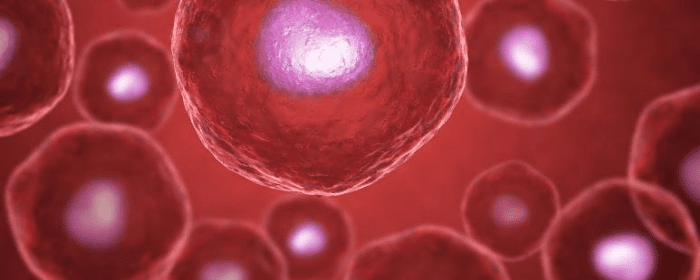
by admin | Mar 9, 2022 | Health Awareness, Chelation Therapy
Chelation therapy is an effective treatment for heavy metal poisoning. First used in the 1950s to treat lead poisoning, healthcare providers now use chelation therapy regularly to remove several heavy metals from the body, including lead, mercury, iron, copper, arsenic, aluminum, and calcium.
How Does Chelation Therapy Work?
Chelation therapy removes metals from the bloodstream using ethylenediaminetetraacetic acid (EDTA). A healthcare provider injects EDTA into the bloodstream. ETDA travels throughout the body, collecting metals and forming a compound. The kidneys eliminate the compound through urination.
What Are the Symptoms of Heavy Metal Toxicity?
Environmental metals in the body can cause short and long-term health consequences. Metal toxicity affects the central nervous system, the skeletal and muscular systems, and the immune system. Symptoms of heavy metal toxicity include:
- Forgetfulness
- Chronic fatigue
- Joint or muscle pain
- Autoimmune disease
- Mood changes
Heavy metal toxicity can also cause long-term damage to vital organs if left untreated.
What Are Potential Benefits of Chelation Therapy?
While research into the benefits of chelation therapy is still ongoing, promising studies show that the treatment can potentially reduce inflammation, improve heart health, and reduce infections.
Heart Health
Atherosclerosis, also referred to as the hardening of the arteries results from the buildup of cholesterol and calcium deposits. Injecting EDTA into the bloodstream may collect and remove the calcium in the arteries, loosening blockages and aiding in blood flow.
Antioxidants
Chelation agents, like EDTA, may work similarly to antioxidants in the body, reducing inflammation and removing metals that serve as the foundation of disease development.
Cognitive Health
Research shows that increased copper, iron, and zinc may be associated with various neurodegenerative diseases, including Parkinson’s disease and dementia. Using chelation therapy to remove metals throughout the body can potentially relieve these cognitive disorders.
The potential of chelation therapy for treating various conditions continues to emerge. New studies and research suggest that this alternative treatment may soon become more mainstream.

by Stemedix | Feb 7, 2022 | Chelation Therapy
Primarily used for metal poisoning, chelation therapy is emerging as an alternative treatment for other conditions. Many places worldwide practice chelation therapy as alternative medicine, and it is now gaining in popularity in the US for treating a variety of conditions.
The History of Chelation Therapy
The word chelation comes from the Greek word chelos, meaning claw. The word claw refers to how metals in the body may bind to the chelating agent in a claw-like manner.
First used clinically in 1956 to treat patients with lead poisoning, chelation therapy is an established, effective treatment for patients suffering from metal poisonings.
How Does It Work?
Physicians typically administer chelation therapy using weekly IV treatments, lasting approximately 30 minutes in length. First, a healthcare provider dispenses a chelator or chelating agent into the IV. The chelator then circulates through the bloodstream and binds to metals.
The chelator collects all of the metals in the bloodstream, forming a compound that the kidneys eliminate through urination. The most common chelator is ethylenediaminetetraacetic acid (EDTA), which removes lead, iron, copper, and calcium. Other chelating agents include:
- Dimercaprol
- Succimer
- Deferoxamine
- Penicillamine
- Deferasirox
A healthcare provider chooses the proper chelating agent based on the patient’s health, age, and condition.
What Conditions Does Chelation Therapy Treat?
The US Food and Drug Administration (FDA) only approves chelation therapy to treat metal poisoning. However, some health providers are using this therapy to treat other conditions. Common conditions treated include heart disease, Alzheimer’s disease, and Parkinson’s disease.
Chelation Treatment and Heart Disease
Atherosclerosis is the buildup of plaque in the arteries, leading to heart disease over time. Proponents of using this therapy to treat atherosclerosis believe that chelators can potentially bind to the calcium found in plaque, thus loosening blockages and preventing a buildup.
Chelation Treatment and Alzheimer’s Disease
Based on the belief that a buildup of aluminum in the brain causes Alzheimer’s disease, the chelator’s ability to bind and remove metals from the bloodstream may potentially provide relief from this degenerative disease.
Chelation Treatment and Parkinson’s Disease
Parkinson’s patients are known to experience a buildup of iron in the brain. While it’s not entirely clear how the buildup of iron affects Parkinson’s patients, proponents of chelation treatment believe that removing the iron has the potential to benefit those suffering from Parkinson’s disease.
The Future of Chelation Treatment
While the FDA is still investigating the potential use of this therapy for various conditions, many healthcare providers are optimistic about its future. Patients looking to learn more about chelation therapy should reach out to their healthcare provider to know if it’s right for them. If you would like to learn more, contact a care coordinator today and schedule a free consultation.

by admin | Jan 28, 2022 | Chelation Therapy
Metal toxicity, resulting from lead, mercury, aluminum, and arsenic, continues to be a significant public health concern and contributes to a number of serious health issues, including damage to the central and peripheral nervous systems, compromised kidney and liver function, and damage to the cardiovascular system.
Specifically, toxic metals appear to contribute to oxidative stress in stem cells and endothelial progenitor cells (EPSs), the cells responsible for replenishing aging or damaged cells, and are an essential component for maintaining vasculature and neovascularization. The damage caused to these cells, as a result of metal toxicity, has directly contributed to vasoconstriction, hypertension, and altered gene expression.
Considering the established relationship between oxidative injury, endothelial cell dysfunction, and vascular disease, Mikirova et al. ‘s study examined the response of CD34-positive cells to chelation by DMSA. The study also compared the effectiveness of DMSA and EDTA in the chelation of toxic metals and the excretion of essential metals.
Mikirova et al. also share results related to the toxicity of lead and mercury to mesenchymal stem cells (MSCs), endothelial progenitor cells, and differentiated cells such as endothelial cells and fibroblasts. These results were obtained by comparing data obtained from 160 subjects who received oral DMSA chelation and 250 subjects who received intravenous EDTA chelation.
At the conclusion of this study, the authors were able to draw a number of conclusions, including:
- Lead and mercury inhibit in vitro metabolism of MSCs and proliferation and adult differentiated cells, with MSCs demonstrating increased sensitivity to both lead and mercury.
- DMSA demonstrated the ability to increase circulating CD34-positive cell numbers in vivo and is better at extracting lead and arsenic than EDTA – but is also more likely to increase extraction of certain essential minerals.
- Removal of toxic metals significantly improved the number of stem cells and progenitor cells in circulation.
The authors also point out that DMSA offers improved results when compared to EDTA, for lead and arsenic chelation, but with a cost of higher extraction of essential minerals – including a fifty-five-fold increase in copper extraction (meaning copper levels must be monitored and supplemented for during chelation therapy). On the other hand, clearance of essential metals during chelation by EDTA was increased over twenty-fold for zinc and manganese.
Considering the findings of this study, the authors point out that these findings, along with data published in previous studies, provide some guidelines for the clinical use of DMSA and EDTA as chelating agents.
Mikirova et al. conclude that chelation therapy demonstrates promise for repairing damage resulting from metal toxicity and for restoring circulating stem cell populations. The authors next plan to embark on a larger scale study with the hopes of gaining more data on changes in white cell and progenitor cell numbers before and after chelation therapy.
Source: “Efficacy of oral DMSA and intravenous EDTA in chelation of toxic ….” https://www.transbiomedicine.com/translational-biomedicine/efficacy-of-oral-dmsa-and-intravenous-edta-in-chelation-of-toxic-metals-and-improvement-of-the-number-of-stem-progenitor-cells-in-circulation.pdf.




 St. Petersburg, Florida
St. Petersburg, Florida
